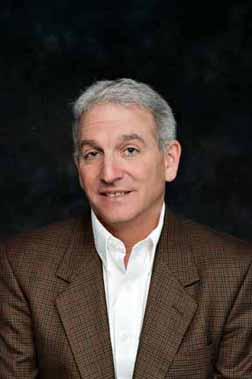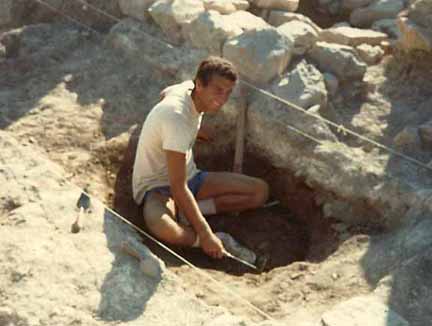
WHY I DECIDED TO FUND A HERITAGE SCHOLARSHIP
by Sheldon Fox, Former ASOR Treasurer (2007-2012), Current ASOR Trustee

While my memory isn’t perfect, I don’t really recall being told up front that I was expected to make a financial contribution to support ASOR. So when our persuasive Executive Director came calling, I wasn’t prepared to respond on the spot. I wanted to think carefully about how a gift could have an impact on ASOR and at the same time be meaningful to me personally.
That thought process led me to the Heritage Program. As background, my connection to ASOR and archaeology came from my long-time friendship with Profs. Eric and Carol Meyers. I took an Old Testament class with Eric as a freshman at Duke in the spring of 1979. That led me to join to Duke’s summer program in Israel in 1981 where I spent a month with Eric, Carol and Jim Strange at Nabratein, in the Upper Galilee (see photo below). I was a business major at Duke, so my summer journey consisted entirely of electives. Even so, that summer remains the most memorable experience from my entire time at Duke, and Eric and Carol are the only professors I have stayed close to over the 30 plus years since.
The dig experience caused me to develop an appreciation for the hands-on nature of archaeological field work and the importance of that work to the process of interpreting history. Certainly course work, lectures, scholarly journals and meetings like ASOR’s annual meeting are critical components as well. But in my humble, non-academic opinion, none of those pieces can substitute for the work that goes on in the field.

But back to archaeology. When Andy Vaughn asked me to support ASOR financially, I started with the Heritage program, which requires an annual gift of $2,500. $500 of my gift goes toward ASOR’s operating costs, which include the review of applications for summer field work support. The remaining $2,000 is typically given to support two summer student experiences in the field at $1,000 each. In most years, my dollars have gone to grad students who are the archaeologists of the future.
Each year I get a note of gratitude from the recipients of my fellowships and I generally find out that the support made a big difference in their ability to participate that summer in the field. I also get insight as to the specifics of the work that was performed.
All in all, it is very satisfying to me to be able to support the next generation of scholars as they get the chance to get their hands dirty and dig into the past as I got to do at Nabratein.
I hope others will join me in supporting the Heritage program so that ASOR’s support for field work will continue to grow.